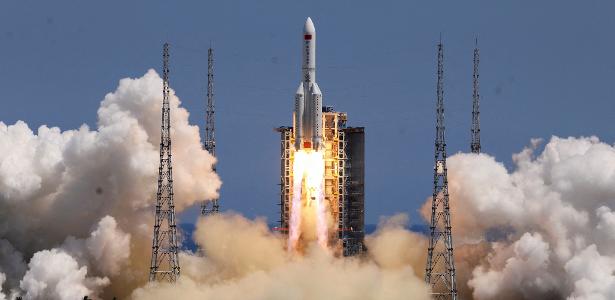The course of a 21-ton Chinese Long March rocket launched into space worries some astronomy experts around the world. According to them, there is a risk that parts of the released material will not disintegrate when returning to Earth and fall with high speed at points on Earth that are still impossible to predict.
The Long March 5B rocket left Beijing’s Wentian Station in the early hours of Sunday (24) taking a solar energy laboratory to the Tiangong Space Station. It arrived at the site at the planned time, but some modules of it do not have any “control plane” to return to Earth.
According to astronomer Jonathan McDowell, a member of the Harvard-Smithsonian Center for Astrophysics, data from the US Space Command show that parts of the Long March 5B rocket are “floating on their own”.
“The main stage of the 21-ton rocket remains in orbit. It has not been actively deorbited,” the expert tweeted.
To date, there are no ongoing warnings issued by the US Army or any Space Command regarding the “course” of the rest of the rocket.
According to the space news website Space, the risk of “casualties” arising from the fall of rocket modules in the world is low, but the object launched by China has “significant” volume.
An article published in the journal Nature Astronomy calls the practice of letting rocket parts fall uncontrollably back to Earth as an “unnecessary risk”.
similar cases
This is not the first time that the return of pieces of a rocket to Earth has caused concern. In May, pieces of another Chinese-made Long March rocket crashed into the Indian Ocean, north of the Maldives, raising concerns at the time that it might land in a populated area.
even with the rocket debris fall into the sea on the occasion, the administrator of Nasa (North American Space Agency), Bill Nelson, issued a note of repudiation accusing the Asian country of “failing to comply with standards of responsibility in relation to its space debris”.
On previous occasions, China has rejected accusations of irresponsibility, with the government saying the risk of harm to “something or someone” in such situations is “extremely low”.
–


